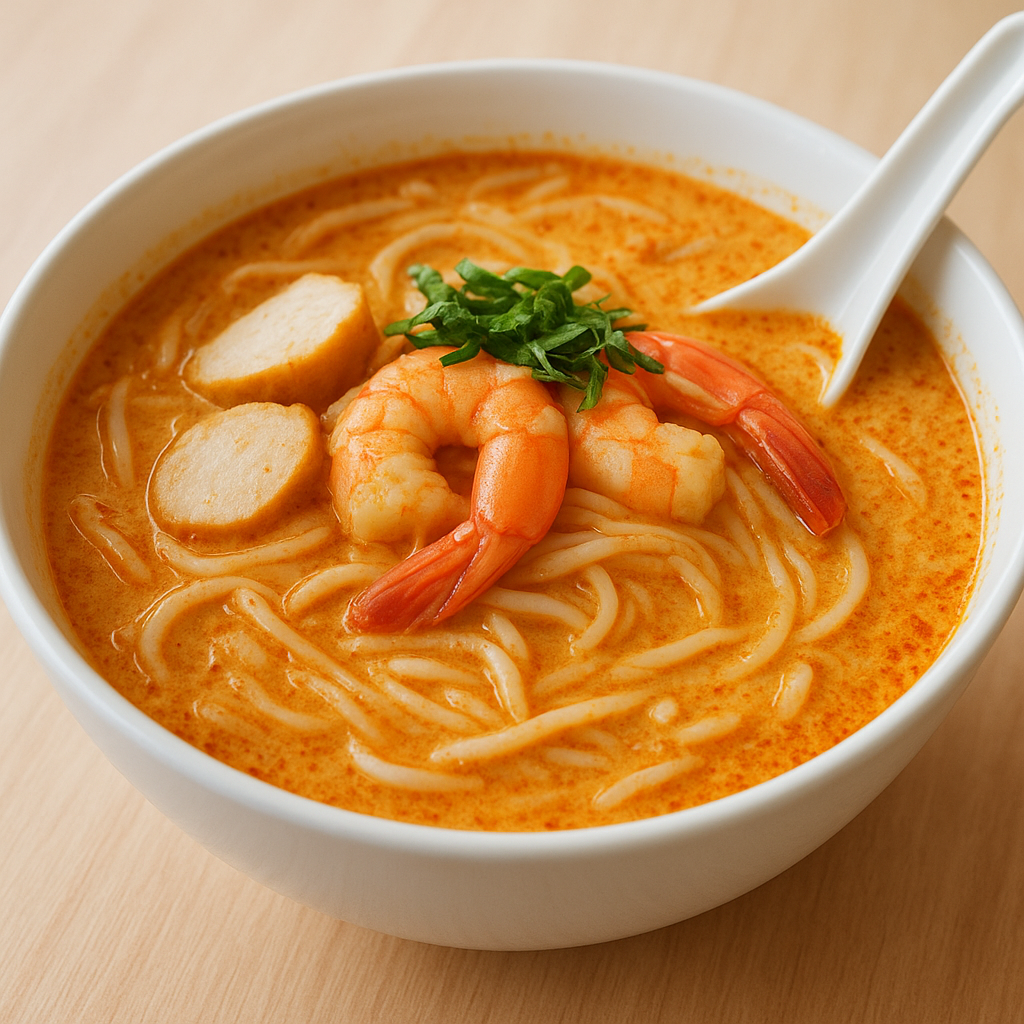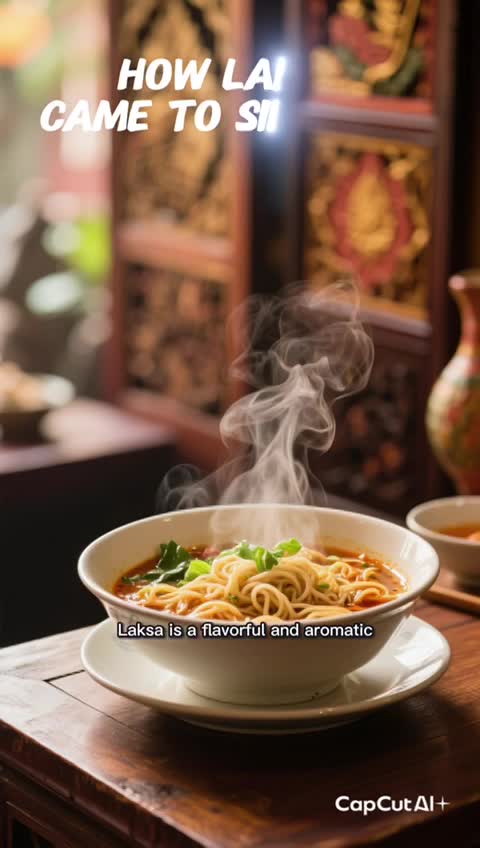Laksa: A Fusion of Spice and Tradition

Laksa is a Peranakan (Straits Chinese) dish that reflects the blending of Chinese and Malay culinary traditions in Singapore and the wider region.
- Origins in the Straits Settlements (1800s):
The Peranakans, also known as Babas and Nyonyas, were descendants of early Chinese immigrants who settled in the Malay Archipelago (including Malacca, Penang, and Singapore) and intermarried with the local Malay community. Their cuisine combined Chinese ingredients and cooking styles with Malay spices, herbs, and coconut milk. Laksa was born out of this cultural fusion. - Name “Laksa”:
The word laksa is believed to have come from the Persian word lakhsha, meaning "noodles." It traveled through trade routes into Southeast Asia, where it evolved into the spicy noodle soup we know today. - Singapore’s Version – Katong Laksa (1950s–1960s):
In Singapore, laksa developed a distinct identity. The most famous style is Katong Laksa, named after the Katong area in the East Coast where Peranakan culture thrived.- It features thick rice vermicelli cut short, so it can be eaten with a spoon rather than chopsticks.
- The soup is rich with coconut milk, dried shrimp, and sambal, giving it a creamy yet spicy flavor.
- It’s typically topped with prawns, cockles, fishcake, and fresh laksa leaves.
- Hawker Culture & National Identity:
By the mid-20th century, laksa was sold widely at hawker centres and coffee shops, solidifying its place as a quintessential Singaporean comfort food. Today, different families and stalls guard their own secret spice blends, ensuring each bowl has its unique twist.
👉 In essence, laksa came to Singapore through Peranakan heritage, evolving into Katong Laksa — a beloved national dish that showcases Singapore’s multicultural roots.
